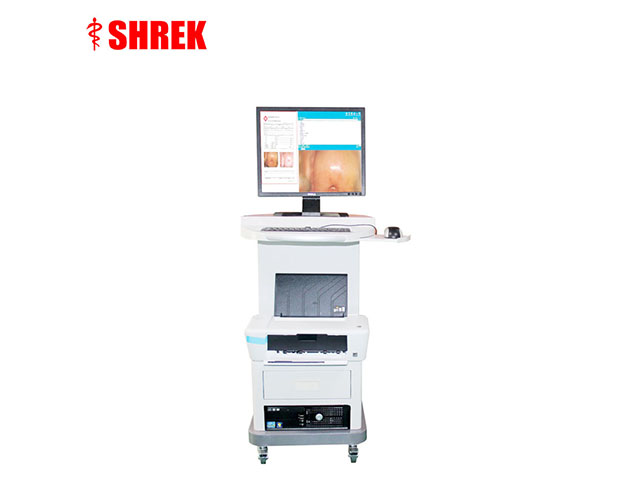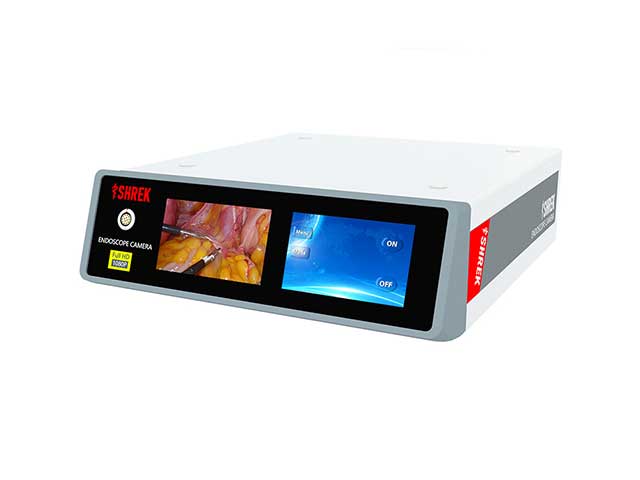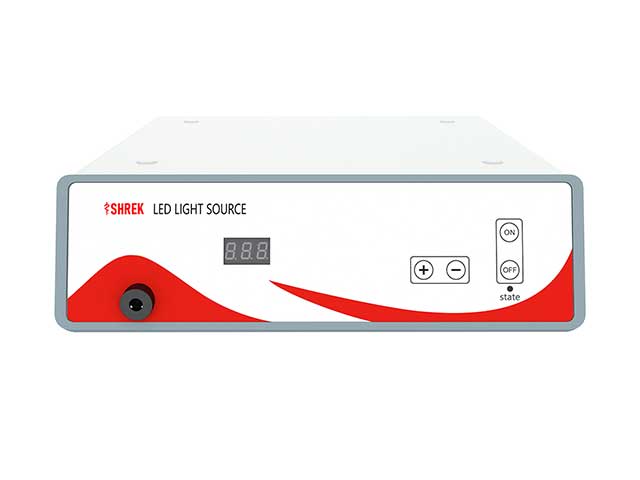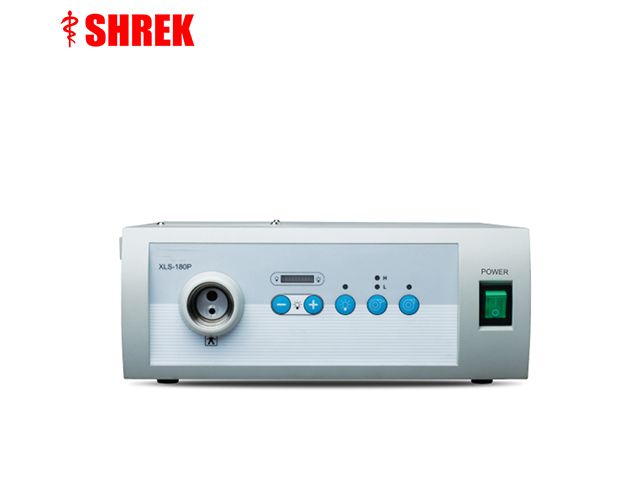
High Quality Portable Video Gastroscope & Colonoscope
The electronic gastroscope can obtain high-definition images, and can perform various image processing through the computer, perform three-dimensional imaging, measure mucosal blood flow, local mucosal hemoglobin content and local temperature. Electro
Description:
Electronic gastroscope is a medical electronic optical instrument that can be inserted into the human stomach cavity to directly observe, diagnose and treat gastrointestinal diseases.
The objects in the stomach cavity are imaged on the image-front photoelectric sensor through a tiny objective lens system, and then the received image signal is transmitted to the image processing system, and finally the processed image is output on the monitor. The electronic gastroscope can obtain high-definition images, and can perform various image processing through the computer, perform three-dimensional imaging, measure mucosal blood flow, local mucosal hemoglobin content and local temperature. Electronic gastroscopy is recognized as the most reliable method for diagnosing esophageal, gastric and duodenal diseases. The World Health Organization regards electronic gastroscopy as the gold standard for the diagnosis of digestive tract diseases.

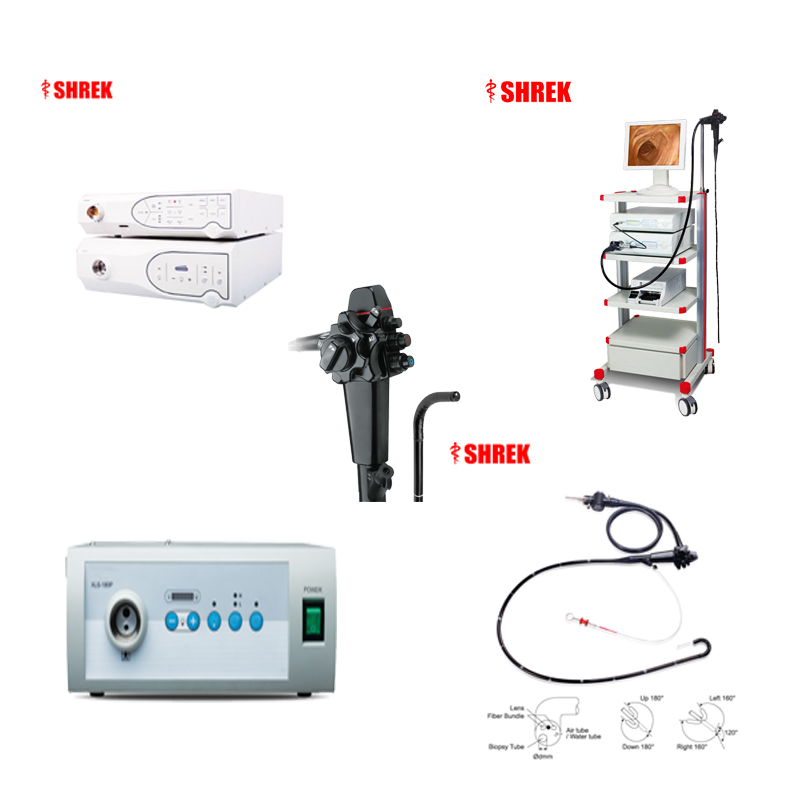
Component of complete ductoscope set:
Medical Monitor (15”, 21”, 24”, 27”)
Endoscope Camera System (CCD & HD)
Light Source
Trolley
Video Gastroscope
Video Colonoscope
Application:
1. Long-term repeated upper abdominal pain, fullness and discomfort, nausea, vomiting, acid reflux, and belching.
2. Unexplained lower gastrointestinal bleeding, chronic diarrhea, abdominal mass, middle and lower abdomen pain, low bowel obstruction.
3. Malignant transformation of the esophagus, stomach, and duodenum needs to be diagnosed in patients, and X-ray barium meal examination finds lesions but cannot be diagnosed.
4. Suspected benign or malignant colon tumor, undiagnosed by X-ray examination.
5. Unexplained acute and chronic upper gastrointestinal bleeding.
6. Unexplained loss of appetite, weight loss, or anemia.
7. Diagnosed upper gastrointestinal lesions and those who need follow-up review after esophagus and stomach surgery, such as ulcers, atrophic gastritis, precancerous lesions, after gastric surgery, etc..
8. Removal of foreign bodies in the upper gastrointestinal tract and those who need electronic gastroscope for treatment (such as stenosis dilation, esophageal stent placement, etc.).
9. Barium enema or bowel examination revealed abnormalities, and the nature and scope of the lesions need to be further clarified.
10. Determine the scope of the lesion before colon cancer surgery, and follow-up after colon cancer and polyps surgery.
Electronic gastroscope is a medical electronic optical instrument that can be inserted into the human stomach cavity to directly observe, diagnose and treat gastrointestinal diseases.
The objects in the stomach cavity are imaged on the image-front photoelectric sensor through a tiny objective lens system, and then the received image signal is transmitted to the image processing system, and finally the processed image is output on the monitor. The electronic gastroscope can obtain high-definition images, and can perform various image processing through the computer, perform three-dimensional imaging, measure mucosal blood flow, local mucosal hemoglobin content and local temperature. Electronic gastroscopy is recognized as the most reliable method for diagnosing esophageal, gastric and duodenal diseases. The World Health Organization regards electronic gastroscopy as the gold standard for the diagnosis of digestive tract diseases.


Component of complete ductoscope set:
Medical Monitor (15”, 21”, 24”, 27”)
Endoscope Camera System (CCD & HD)
Light Source
Trolley
Video Gastroscope
Video Colonoscope
Application:
1. Long-term repeated upper abdominal pain, fullness and discomfort, nausea, vomiting, acid reflux, and belching.
2. Unexplained lower gastrointestinal bleeding, chronic diarrhea, abdominal mass, middle and lower abdomen pain, low bowel obstruction.
3. Malignant transformation of the esophagus, stomach, and duodenum needs to be diagnosed in patients, and X-ray barium meal examination finds lesions but cannot be diagnosed.
4. Suspected benign or malignant colon tumor, undiagnosed by X-ray examination.
5. Unexplained acute and chronic upper gastrointestinal bleeding.
6. Unexplained loss of appetite, weight loss, or anemia.
7. Diagnosed upper gastrointestinal lesions and those who need follow-up review after esophagus and stomach surgery, such as ulcers, atrophic gastritis, precancerous lesions, after gastric surgery, etc..
8. Removal of foreign bodies in the upper gastrointestinal tract and those who need electronic gastroscope for treatment (such as stenosis dilation, esophageal stent placement, etc.).
9. Barium enema or bowel examination revealed abnormalities, and the nature and scope of the lesions need to be further clarified.
10. Determine the scope of the lesion before colon cancer surgery, and follow-up after colon cancer and polyps surgery.
